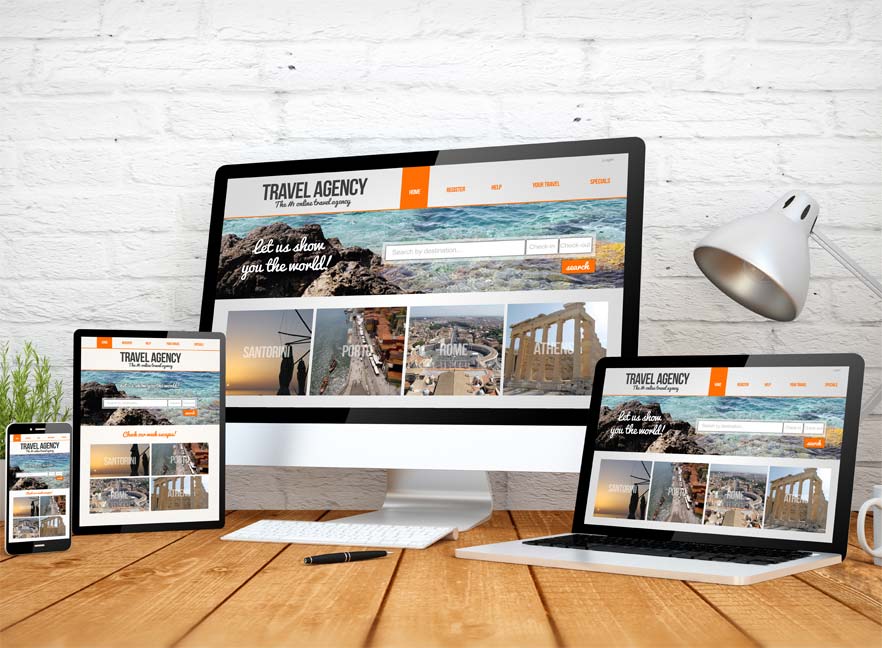Typically the Dynamic Flow as opposed to. the Static Overview: Dissecting Responsive and Adaptive Design within Web Development

In the ever-evolving landscape involving web development, ensuring a regular and easy to use experience across some sort of multitude of products is a fundamental requirement. Two prominent methodologies have surfaced to address this challenge: Responsive Web Design (RWD) and Adaptable Web Design (AWD). While both seek to optimize the viewing experience on distinct screen sizes, their very own underlying philosophies, specialized implementations, and typically the resulting user expertise differ significantly. This article delves into a detailed rapport of responsive and adaptive design, featuring their contrasting methods to layout, content shipping and delivery, performance, and the implications for programmers and end-users alike.
The core distinction between responsive and even adaptive design is placed in how they deal with the adaptation to different screen dimensions. Responsive design embraces a fluid in addition to dynamic approach, permitting a single design to adjust seamlessly to any viewport. Adaptive design, conversely, is dependent on an even more static and predefined strategy, serving different fixed layouts structured on the recognized device or screen width.

Responsive Style: The Single, Delicate Canvas
Responsive word wide web design operates upon the principle of developing a single CODE structure and some sort of single pair of CSS rules that intelligently adapt to the viewing environment. This particular adaptability is accomplished through:
Fluid Grids: Layouts are built using relative models like percentages, permitting elements to broaden and contract proportionally to the screen width. This ensures that will content reflows obviously as the viewport changes.
Flexible Mass media: Images and video clips are scaled dynamically using techniques like max-width: 100%, avoiding them from stopping the layout upon smaller screens. Modern approaches also involve serving optimized mass media based on gadget capabilities.
CSS Multimedia Queries: These conditional CSS rules allow developers to use different styles plus layout adjustments depending on specific device noteworthy characteristics, such as display width, height, positioning, and resolution. Breakpoints are strategically put to trigger design shifts at key element screen sizes.
The beauty of reactive design lies in its inherent overall flexibility. A web site built responsively can theoretically adapt to any display screen size, present or even future, without needing significant redevelopment. It's just like a single, practical document that reflows its text and images to slip any page dimensions.
Adaptive Design: The Curated Collection of Experience
Adaptive web style, as opposed, involves creating multiple distinct editions of any website, each focused on a specific set of display screen sizes or gadget categories. When the user accesses the particular site, the server or the client-side script detects the particular device's characteristics plus serves the almost all appropriate pre-designed design.
Key top features of adaptable design include:
Predetermined Layouts: Designers create several static styles, often targeting common screen widths (e. g., 320px, 480px, 768px, 1024px, 1200px).
Device/Screen Detection: The website employs mechanisms to identify typically the user's device or viewport width to determine which layout to serve. This specific detection can occur in the server-side (serving different HTML in line with the user agent) or perhaps client-side (using JavaScript to redirect or perhaps apply specific CSS).
Potentially Different Content material: In some adaptable implementations, designers may even choose to demonstrate or hide particular content elements centered on the device being utilized, offering the truly tailored encounter.
Think of adaptive design as possessing a set of cautiously crafted snapshots of your website, every single optimized for your seeing size. The device decides the snapshot that will best matches your own current screen.
The particular Implications for Builders and Users:
Programmers: Responsive design generally presents a more streamlined development work, especially for simpler sites. However, achieving sophisticated responsive layouts in addition to optimizing performance across all devices can easily require significant experience. Adaptive design requirements more upfront planning and design work for each and every layout but offers finer handle over the ability in targeted devices.
Users: A well-executed responsive website gives a soft and consistent knowledge, regardless of the particular device they are usually using. However, throughout some cases, the particular "one-size-fits-all" approach may possibly lead to compromises in layout or performance on particular devices. A well-executed adaptive website can provide a highly improved experience tailored to their specific unit, potentially ultimately causing faster load times in addition to more relevant content. https://outsourcetovietnam.org/software-development-and-it-outsourcing/front-end-development-outsourcing/mastering-responsive-web-design-best-practices-for-a-seamless-user-experience/ However, the experience might feel less consistent if the particular differences between templates are too major.
Conclusion: Choosing the particular Right Strategy for the Diverse Web
Both responsive and adaptive web design are usually valuable tools within the modern net developer's arsenal. Receptive design, with it is inherent flexibility and relatively lower first development overhead, offers become the prominent approach for numerous websites, offering a robust solution intended for the vast in addition to ever-changing landscape regarding devices. Its capability to adapt to practically any screen size tends to make it a future-proof choice.
Adaptive design, with its probable for highly personalized experiences and satisfaction optimizations for specific devices, can be some sort of strategic choice for websites with evidently defined target audiences and device utilization patterns. However, its increased development and maintenance demands, and even potential limitations in handling new or perhaps less common monitor sizes, often make it a less universally suitable solution.
Ultimately, the decision of whether in order to employ a responsive or adaptive method depends on a careful evaluation regarding project requirements, target audience, available resources, efficiency goals, and typically the desired level associated with control over an individual experience on various devices. Understanding the particular fundamental differences and even the associated trade-offs is crucial in making an informed decision and crafting website experiences that successfully serve the diverse needs of today's internet users.
